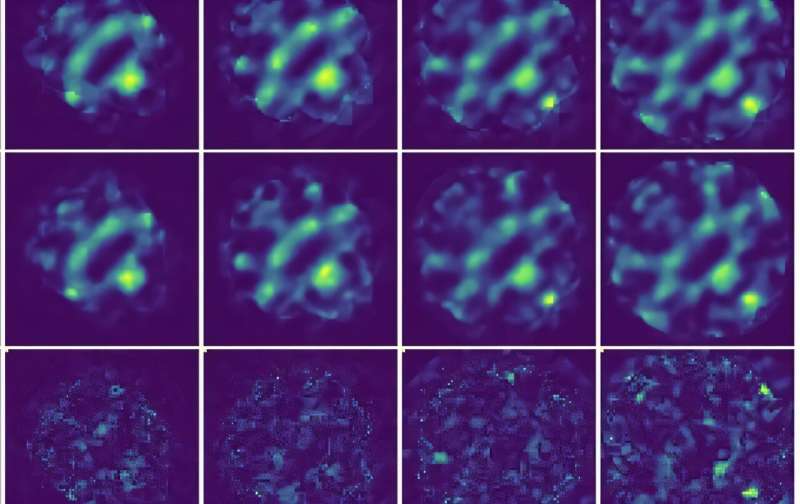Researchers at Monash University have developed an artificial intelligence (AI) model that significantly improves the accuracy of four-dimensional scanning transmission electron microscopy (4D STEM) images.
Called unsupervised deep denoising, this model could be a game-changer for studying materials that are easily damaged during imaging, like those used in batteries and solar cells.
The research from Monash University’s School of Physics and Astronomy, and the Monash Center of Electron Microscopy, presents a novel machine learning method for denoising large electron microscopy datasets. The study was published in npj Computational Materials.
4D STEM is a powerful tool that allows scientists to observe the atomic structure of materials in unprecedented detail.
However, a challenge arises when dealing with delicate materials that can be damaged by the electron beam used in the process.
To avoid this, researchers use lower electron doses, which unfortunately leads to noisy and unclear images. This makes it difficult to study the structure of these materials.
The team at Monash has developed a solution: a deep learning model that “denoises” the 4D STEM images.

“Our new AI model dramatically improves the clarity of 4D STEM images, allowing us to study delicate materials that were previously too sensitive for detailed analysis,” said lead study author Dr. Alireza Sadri, a postdoctoral fellow at the Monash School of Physics and Astronomy.
“By reducing noise in low-dose imaging, we’re expanding the range of materials that can be studied, which could lead to breakthroughs in fields like nanotechnology and electronics,” he said.
The new AI model uses the relationship between the position of the electron beam and the scattering patterns it generates on passing through the material.
By limiting the complexity of the network, the model can focus on the regularities in the signal while ignoring the random noise.
Essentially, the model removes the unwanted noise from the data, leaving behind clearer and more accurate images. By not relying on pre-labeled data, the model can work without any prior information about the material being studied.
This development is expected to enhance the effectiveness of 4D STEM, particularly in fields where characterizing beam-sensitive materials is critical.
More information:
Alireza Sadri et al, Unsupervised deep denoising for four-dimensional scanning transmission electron microscopy, npj Computational Materials (2024). DOI: 10.1038/s41524-024-01428-x
Provided by
Monash University
Citation:
AI model improves 4D STEM imaging for delicate materials (2024, October 23)
retrieved 24 October 2024
from https://phys.org/news/2024-10-ai-4d-stem-imaging-delicate.html
This document is subject to copyright. Apart from any fair dealing for the purpose of private study or research, no
part may be reproduced without the written permission. The content is provided for information purposes only.

